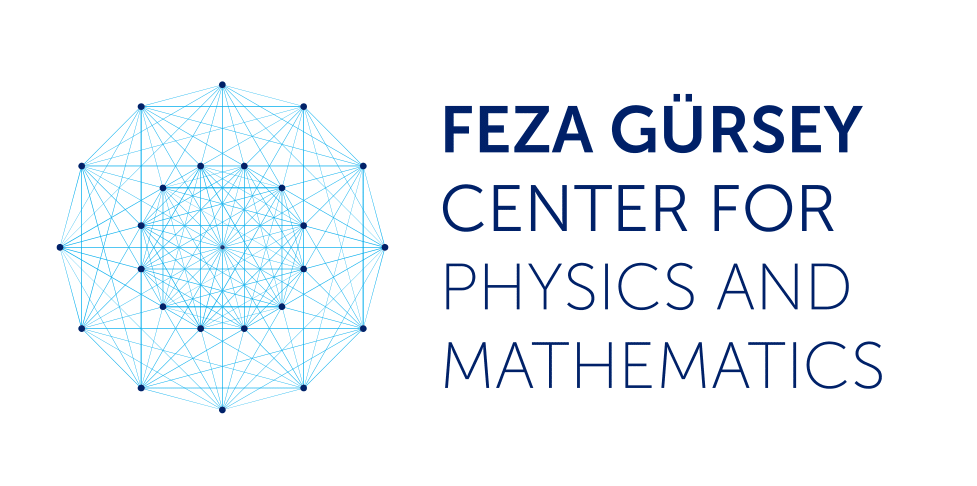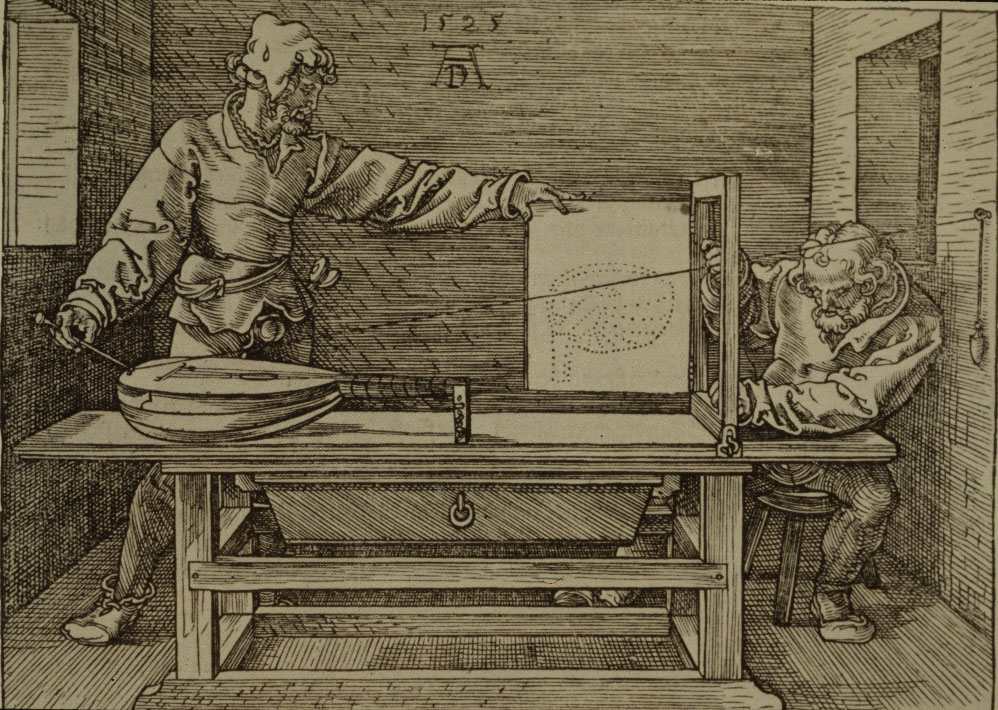
Dual Perspectives Meetings

The goal of these 1-day events is to foster communication and collaboration
between mathematicians and theoretical physicists. Meetings will
take place on Friday's at Feza Gürsey Center for Physics and
Mathematics which is located in the Kandilli campus of Boğaziçi University. For
transportation and other practical information please check here. There will be two sessions in each event. The
morning session 10:30-12:00 will be elementary and will give a basic introduction to the subject. It will be followed by an afternoon session 13:30-15:00, which will be a continuation towards more advanced aspects.
Below is the schedule for Spring 2023. Click for the abstracts!
Abstract: N=1 supergravity theory in d=4 dimensions is the simplest locally
supersymmetric extension of Einstein's general theory of relativity. A
short overview of its many remarkable properties will be given. In
particular I will introduce the notion of complex quaternionic exterior
differential forms and discuss their relevance for simple supergravity.
10.03.2023 - Tekin Dereli (Maltepe University and Koç University) - Where Does Simple Supergravity Theory
Stand Today?
Abstract: The spectral properties of natural self-adjoint operators
such as the Hodge Laplacian and the Dirac operator play a fundamental
role in understanding many geometric and physical problems. I will
discuss some aspects of the theory in the very rich context of closed
hyperbolic three-manifolds, and highlight connections with geometry,
low-dimensional topology, and number theory.
17.03.2023 - Francesco Lin (Columbia University) - Geometry and spectra of hyperbolic three-manifolds
Abstract: Non-Lorentzian geometry refers to a differential geometric framework for
space-times with a degenerate metric structure and a local causal structure
that differs from the one of Lorentzian geometry. It has recently found new
applications, e.g., in the study of field and gravitational theories in
non- and ultra-relativistic regimes. In the first of these two lectures, I
will provide an introduction to non-Lorentzian geometry, focusing on the
examples of Galilean and Newton-Cartan geometry that describe
non-relativistic space-times. I will discuss their metric structure and
metric-compatible affine connections with and without torsion in a frame
formulation. I will furthermore comment on the physical interpretation of
these structures and outline differences with Lorentzian geometry.
The second lecture will focus on the appearance of non-Lorentzian geometry
in non-relativistic string theory, a consistent and UV-complete string
theory whose excitations exhibit non-relativistic dispersion relations and
Newtonian gravitational interactions. After an introduction to
non-relativistic string theory, I will argue that its target space-time
geometry is given by an extension of Newton-Cartan geometry, called string
Newton-Cartan geometry. I will discuss the structure of string
Newton-Cartan geometry and show how it can be viewed as a particular limit
of Lorentzian geometry equipped with an extra two-form Kalb-Ramond gauge
field. If time permits, I will outline how this limit can be used to obtain
effective gravitational field equations for non-relativistic string theory
and comment on T-duality in non-relativistic string theory.
07.04.2023 - Jan Rosseel (Boskovic Institute, Zagreb) - Non-Lorentzian Geometry
Abstract: Smooth Fano 3-folds are classified in 105 families (Iskovskikh, Mori, Mukai). For the description of these families, see https://www.fanography.info . We know which deformation families have K-polystable (Kahler-Einstein) members and which do not
(Araujo, Castravet, Cheltsov, Fujita, Kaloghiros, Martinez-Garcia, Shramov, Suess, Viswanathan). Since K-polystable Fano threefolds form good moduli spaces, it would be interesting to describe K-moduli of smoothable Fano 3-folds (moduli that parametrize K-polystable smooth members of a given deformation family and their K-polystable limits). This is a very active area of research, but the problem has only been solved for the following 52 deformation families: zero-dimensional families (47 families), two one-dimensional families (families 2-24 and 2-25), cubic 3-folds (Liu, Xu), complete intersection of two quadrics (Spotti, Sun), quartic double solids (Ascher, DeVleming, Liu). In this talk, I will speak about K-moduli of Fano 3-folds in the family 3-10, see https://www.fanography.info/3-10 . This is a two-dimensional family whose smooth members can be obtained by blowing up a smooth quadric 3-fold along two disjoint conics. We know that a general member of this family is K-stable (Kahler-Einstein and finite automorphism groups), but some smooth members are not K-polystable (not Kahler-Einstein), and some members have infinite automorphism group (Cheltsov, Przyjalkowski, Shramov). In the talk, I will give explicit classification of all smooth members of the family 3-10 (normal forms), explain which smooth Fano 3-folds in this family are K-polystable and which are not (Araujo, Castravet, Cheltsov, Fujita, Kaloghiros, Martinez-Garcia, Shramov, Suess, Viswanathan), and describe all singular K-polystable members of this family (work in progress with Alan Thompson from Loughborough). If time permits, I will explain how to prove K-polystability of one singular and very symmetric member of this deformation family.
14.04.2023 - Ivan Cheltsov (University of Edinburgh) - K-moduli of Fano threefolds in the family 3-10
Abstract:In the first lecture I will present the geometric construction of a
wide class of integrable many-body systems
by using the Hamiltonian and Poisson reduction techniques. I will
demonstrate that in some cases
the corresponding reduction scheme pertains to quantisation where it shows up
as a special factorisation problem in quantum algebras.
In the second lecture I will discuss an advanced application of the
reduction technique to the construction of
the hyperbolic Ruijsenaars-Schneider model with spin. I will show that
the model enjoys the Poisson-Lie symmetry
which explains its superintegrability. For the quantum model without
spin I will present the L-operator algebra
and integrals of motion in the formalism of the quantum inverse
scattering method.
28.04.2023 - Gleb Arutyunov (II. Institute for Theoretical Physics,
Hamburg University) - Geometric construction of integrable models
Abstract: The (unique) maximally extended D=11 supermembrane theory
stands out as a candidate for the non-perturbative unification of
superstring theory. In this talk I will review some basic features,
in particular the light-cone gauge reformulation of the theory as the
N-->∞ limit of the maximally supersymmetric SU(N) matrix model,
and present new evidence for the existence of the N-->∞ limit,
using a path integral formulation. I will also touch on several open
issues, such as the construction of supermembrane vertex
operators.
12.05.2023 - Hermann Nicolai (Max-Planck-Institut für Gravitationsphysik, Albert-Einstein-Institut) - Recent Developments in Supermembrane Theory
Abstract: In the first part of the talk, I will give a quick
introduction to D-modules, local cohomology, s-parametric
annihilators and Bernstein-Sato polynomials. In the second
part, I will consider holonomic D-modules associated to
a hypersurface with non-isolated singularities. I will
show a method for computing holonomic D-modules and
microlocal b-functions. The keys of the method are
the use of a Poincare-Birkhoff-Witt algebra and local
cohomology. I will discuss, as applications, relations
between the structure of holonomic D-module and the
vertical monodromy introduced by Siersma and Le cycles
introduced by Massey.
26.05.2023 - Shinichi Tajima (Niigata University) - Holonomic D-modules and non-isolated singularities
Abstract: Supersymmetric extensions of Einstein geometric theory of
general relativity have the remarkable feature that they can give rise to
unexpected global symmetries, known as hidden symmetries. In recent
years, there has been progress in phrasing them in a geometric manner
through so-called generalised or exceptional geometry. In the first part, I
will review these structures and how they give rise to the symmetries of
supergravity. I will sketch how they can be used to formulate and study
deformations of supergravity in a systematic way. In the second part, I
will apply these ideas to a particularly interesting case, both
mathematically and physically. This is the case of two-dimensional
dilaton-gravity, where work since the 1970s on solution generating
techniques and integrable system has been active and is related to an
underlying affine Kac-Moody symmetry. I will review recent work on
constructing the associated exceptional field theory and use it to obtain
new dilaton-gravity models that allow for AdS-type solutions that are
conjectured to be holographically dual to matrix models, such as the one
associated to D0-branes.
02.06.2023 - Axel Kleinschmidt
(Max-Planck-Institut für Gravitationsphysik, Albert-Einstein-Institut) - The Geometry of Hidden Symmetries in Supergravity and Holography
Abstract: In this first general talk I will explain what "symplectic" means,
and sketch a proof of Gromov's non-squeezing theorem and of
Gromov's 2-ball theorem. These basic symplectic rigidity
results already have applications to problems in dynamics,
such as short-time super-recurrence and the non-existence of
local attractors of certain Hamiltonian PDEs.
For the second part, write $B^4(a)$ for the ball of capacity $a=\pi r^2$,
and $Z^4$ for the symplectic cylinder $D^2(1) \times \RR^2$
where $D^2(1)$ is the disc of area 1.
Going beyond Gromov's non-squeezing theorem,
Sackel, Song, Varolgunes, and Zhu recently
showed that for $a>1$ the complement $B^4(a) - S$
of a subset $S$ in the ball cannot be embedded symplectically into $Z^4$
if the Minkowski dimension of $S$ is $<2$.
They also found that this result is sharp provided that $a<2$,
and then Brendel extended this to $a<3$.
In joint work with Emmanuel Opshtein,
we find in any ball $B^4(a)$ a finite union of planar Lagrangian discs $S$
such that $B^4(a) \setminus S$ symplectically embeds into $Z^4$.
Among the applications are: capacity killing;
non-displaceability of the Clifford torus $T(1/d,1/d)$ from $S$ in $B^4(d)$;
and the existence of very short Reeb chords from a Legendrian knot back to itself or to $S$.
09.06.2023 - Felix Schlenk (University of Neuchatel) - Symplectic almost squeezings of large 4-balls
Organizers : Nihat Sadık Değer, Umut Varolgüneş
These events are partially supported by TÜBİTAK grant number 121C034.